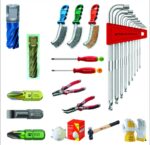Inductive sensors now in compact D3 and M4 housing
Treotham’s range of Wenglor inductive sensors with increased switching distances features enhanced performance in miniature design: A total of eight new sensors from the I03 and I04 series in the compact D3 and M4 housing for detecting metallic objects in confined systems. Practically no larger than a pin head, the robust sensors in V2A stainless steel housing demonstrate their strengths exactly where space is most limited. The I03 series sensors have a diameter of just 3 mm (D3) and a smooth housing, while the I04 series has an external thread with a total diameter of 4 mm (M4). With both series, the housing is just 22 mm long. The almost invisible miniature sensors detect precise switching signals in places where virtually no installation space is available. Increased switching distances of up to 1 mm, a robust PUR cable connection (two meters), a high IP67 degree of protection and a broad temperature range between –25°C and +70°C ensure high performance and long service life. Thanks to flush mounting, the sensors can be integrated mechanically protected in systems. The optional PNP/NPN and NO/NC variants also enable convenient handling with existing systems. Thanks to the LED adjustment aid, the sensors can also be easily installed. The bright LED shows the status clearly, even over long distances. Eight new products expand the entire portfolio The introduction of the I03 and I04 Wenglor series expands Treotham’s product portfolio for increased switching distances by eight new sensors (four per design). In total, there are now sensors in nine different formats in this range, with five connection types and in 15 different housing lengths. With this wide range of products there is a suitable solution for every special requirement. Thanks to the new types, solutions are now also available in areas with very little space, where a […]










